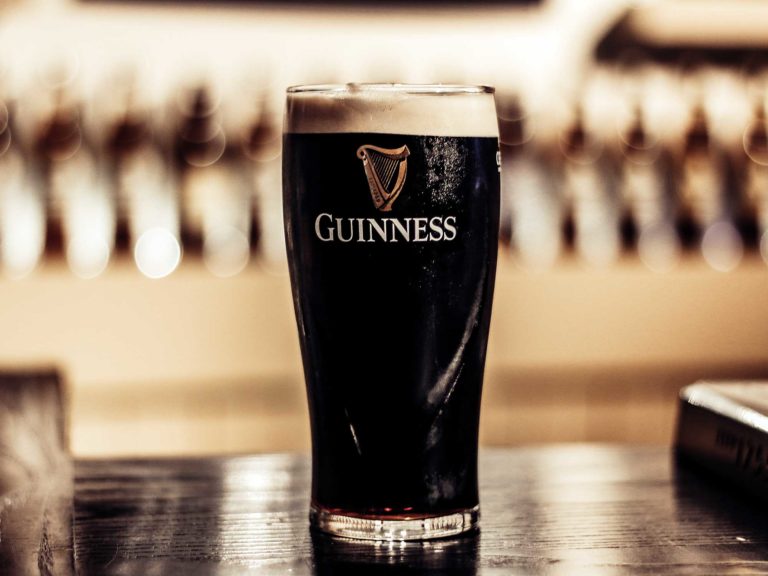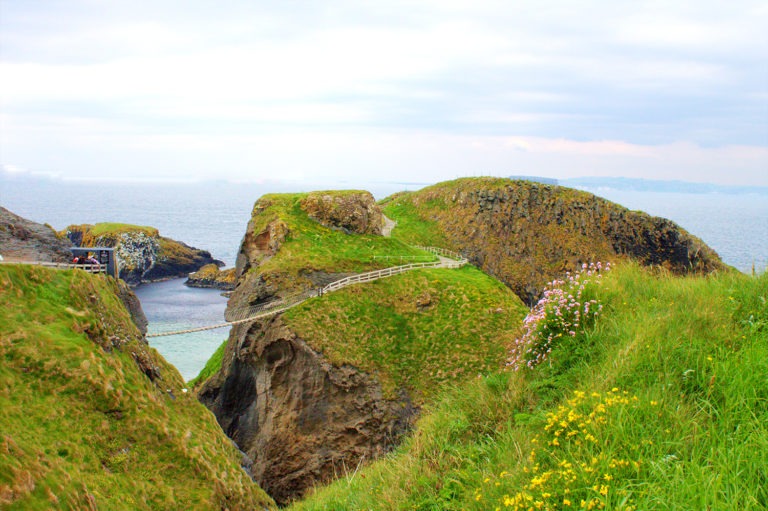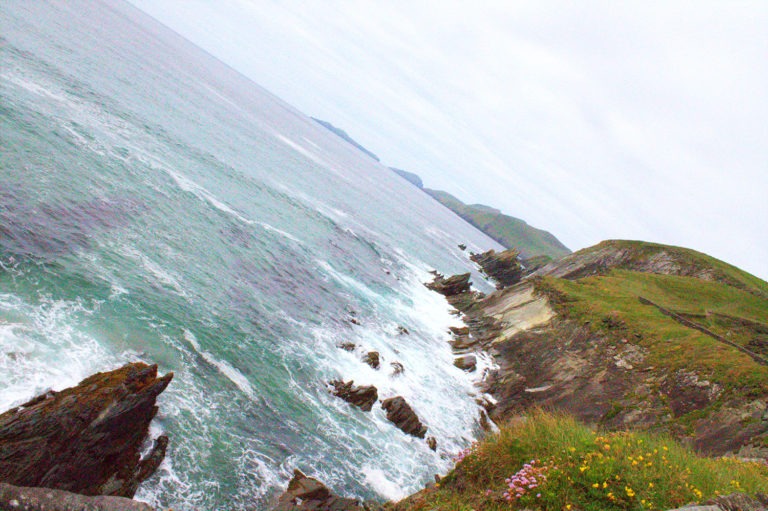Ireland’s Ancient East: Why You Should Go And What You Can’t Miss
 Historic Drogheda
Historic Drogheda
If you’ve been thinking about travelling to Ireland, surely you’ve considered the classics: the Cliffs of Moher, the Dingle Peninsula, Blarney Castle, the Aran Islands. Notice how they’re all on the west coast? Yeah—Western Ireland gets all the glory these days.
But what if I told you there’s an equally enticing, similarly photogenic portion of Ireland, wedged between Cork and Northern Ireland, that holds some of the country’s most significant historic sites? Where history goes back 5000 years and where lush meadows are awash with ancient abbeys and stately castles?
Welcome to Ireland’s Ancient East.
What Is Ireland’s Ancient East?
Ireland’s Ancient East encompasses some of the most sacred and mystical scenes in the country, with tombs older than the great pyramids of Gizeh and monasteries that enduringly altered Irish annals. The region’s history starts 5000 years ago along the very banks of the mighty River Boyne and continues up to this day, where visitors such as myself are encouraged to immerse themselves in the Boyne’s lush landscapes, awe-inspiring by stories told by captivating storytellers, and mindbogglingly old monuments.
To say I had a blast would be an understatement.
Beaulieu House and Gardens
Welcome to the stately Beaulieu House, one of the first unfortified houses in Ireland. Cara Konig is the eleventh generation of the Titchburn family to own and run this manor—curiously passed from through the female lineage rather than the male, as men were frequently called to the battlefields. Originally built by Sir Henry Titchburn in the 1660s, the Beaulieu House miraculously survived the War of Irish independence in the 1920s, probably because the house was their permanent residence and, as such, employed several local residents; most of the other Anglo-Irish noble houses in the area were burnt down without so much as a second thought.
Whatever you do at Beaulieu House, make sure to ask Cara for a guided tour of the estate, including the gardens. Her warm and welcoming disposition will make any time spent at Beaulieu House undoubtedly worthwhile.
Slane Castle


I was lucky enough to visit the stately Slane Castle, home of the Conyngham family since the 18th century set in the heart of a 1,500-acre estate in the heart of the Boyne Valley. It is said that the hill on which the castle is built is precisely where Saint Patrick lit his paschal fire, after which he was summoned by the High King to the nearby Hill of Tara, which subsequently resulted in Ireland being converted to Christianity. How’s that for historical significance in Ireland’s Ancient East?
Aside from its connection to the infamous Battle of the Boyne, the castle’s current claim to fame is the home the wonderful natural amphitheatre formed by the sloping lawns that surround the property and which welcome 85,000 music lovers every summer for rock concerts, with no-name headliners that you most likely haven’t heard of: U2, Madonna, Rolling Stones, and other promising up-and-comers.
Melifont Abbey


As one of the wealthiest and most influential monastic houses in medieval Ireland, Old Mellifont Abbey is definitely a must-do in Ireland’s Ancient East. It is, in fact, the country’s oldest Cistercian Abbey (dating back to 1142); its construction marked the beginning of Norman stone architecture across Ireland, which is nowadays quite common.
At the height of its popularity, Mellifont Abbey housed over 400 monks and remained rather prosperous until its demise during the Kingdom of Ireland’s Nine Years’ War, whenKing Henry VIII ordered the subsequent reformation of the Church of Ireland; so prosperous, in fact, that monks had stones imported from England and mainland Europe for some of the buildings, a choice that went against every monastic value of simplicity and anti-materialism. This exuberance appalled and offended local populations, and it is without a hint of shame that they stripped stones from the abbey ruins to build houses in the vicinity.
Make sure to ask for a guided tour of the ruins: John is an everflowing fountain of information and really knows how to bring pieces of Irish history together to create a cohesive, clear narrative.
Monasterboice

Behold the finest Celtic cross in Ireland! Dating back from the 9th century, Muireadach’s Cross is regarded as a symbol of Irish heritage and depicts carvings from various scenes of both the Old and the New Testaments. The free-standing, 5.5-metres high cross (look at how tiny I am next to it!) is located on an early Christian settlement from the 5th century founded by Saint Buithe; in fact, the name Monasterboice is the anglicisation of Celtic Irish Mainistir Bhuithe, meaning “monastery of Buithe”.
Loughcrew Cairns
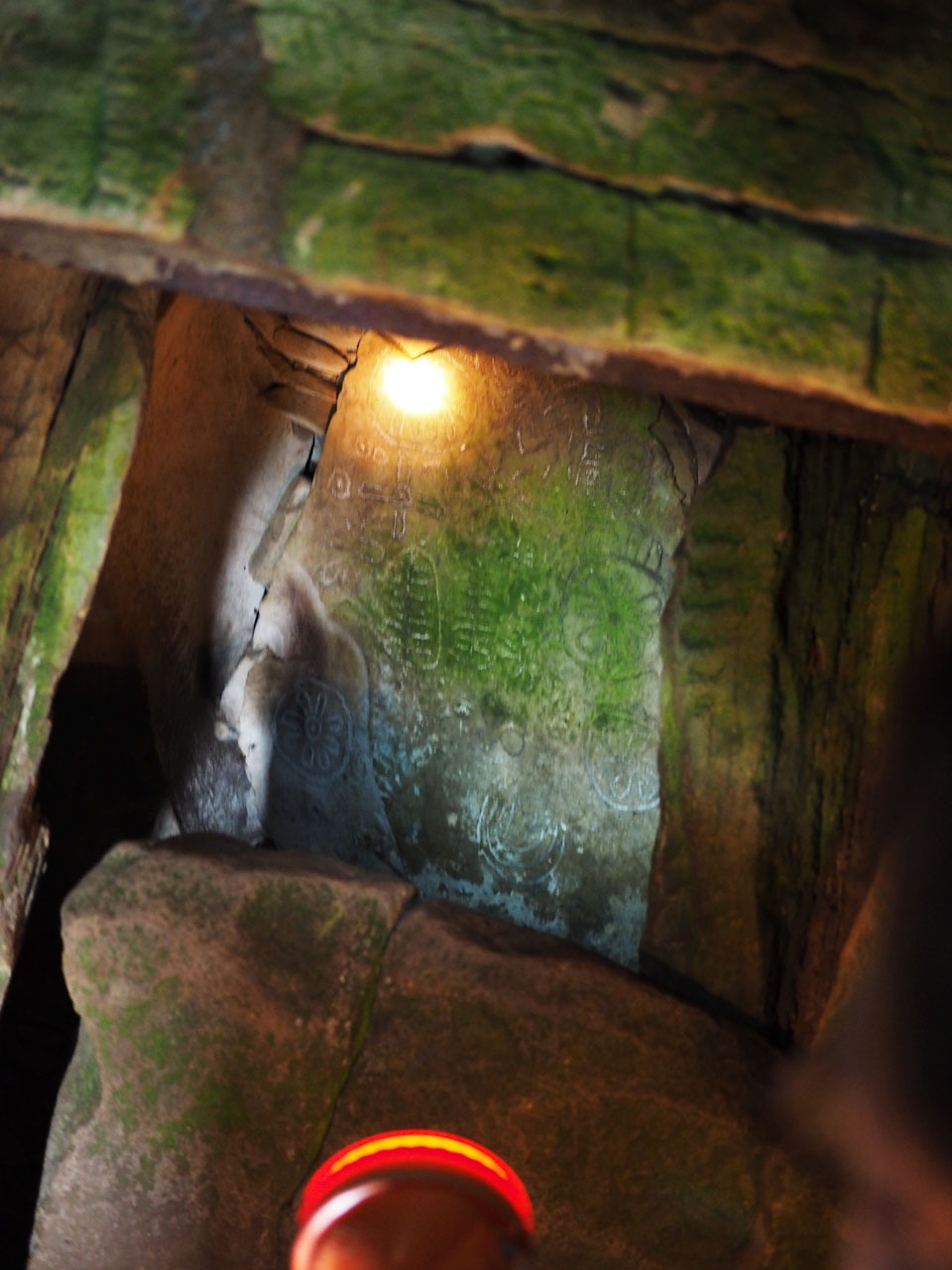
This was my favourite part of the Ireland’s Ancient East trip. I was completely speechless from start to end—partly because I was out of breath from the hike, let’s be honest here—and if you know me, you’re well aware that I am barely ever at a loss for words.
Standing in that megalithic burial chambers, admiring the precise carvings, and learning that the cairns’ black stones, which are carved with various solar symbols and petroglyphs, are only ever fully illuminated on the spring and autumnal equinoxes when the sun beams directly onto them at sunrise—trust me, you’d be speechless, too.
Loughcrew Cairns dates back from 3200 BC, making it technically older than the freakin’ pyramid (yeah, let that sink in for a bit); as such, is one of the most significant prehistoric cemeteries in Europe. The site consists of 30 passage cruciform-shaped tombs and free-standing megalith stones and offers sprawling views of the valley below.
Hill of Tara
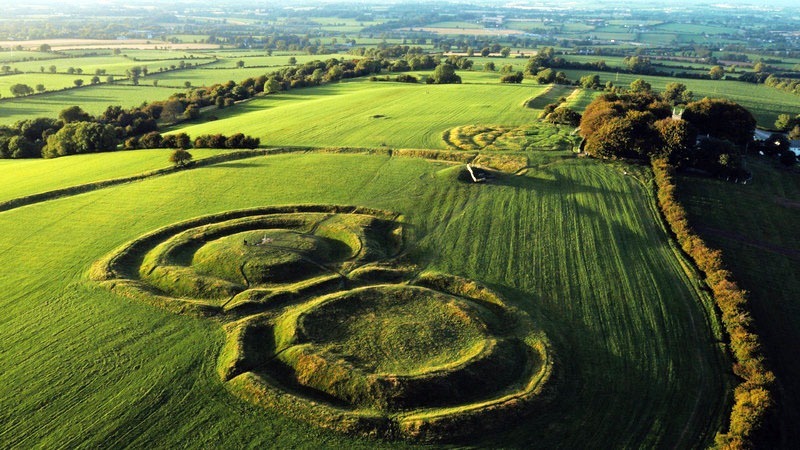 Image courtesy of Failte Ireland – a different perspective on the Hill of Tara!
Image courtesy of Failte Ireland – a different perspective on the Hill of Tara!
Once the seat of Árd Rí na hÉireann (High King of Ireland), the Hill of Tara is, to most experts, the absolute most important archaeological site in the country. The 500-feet high dwelling has strong connections to Irish mythology; for example, this is where over 142 kings are said to have held feasts and been acknowledged by Earth Mother Goddess Maeve, where gods entered the realm of eternal joy, and where Saint Patrick confronted pagans and converted them to the early version of the Irish Catholic Church.
The Hill of Tara also boasts burial chambers dating back to the Iron Age, which are enclosed by ditches and ring forts (best seen on the aerial photo above).
Trim Castle
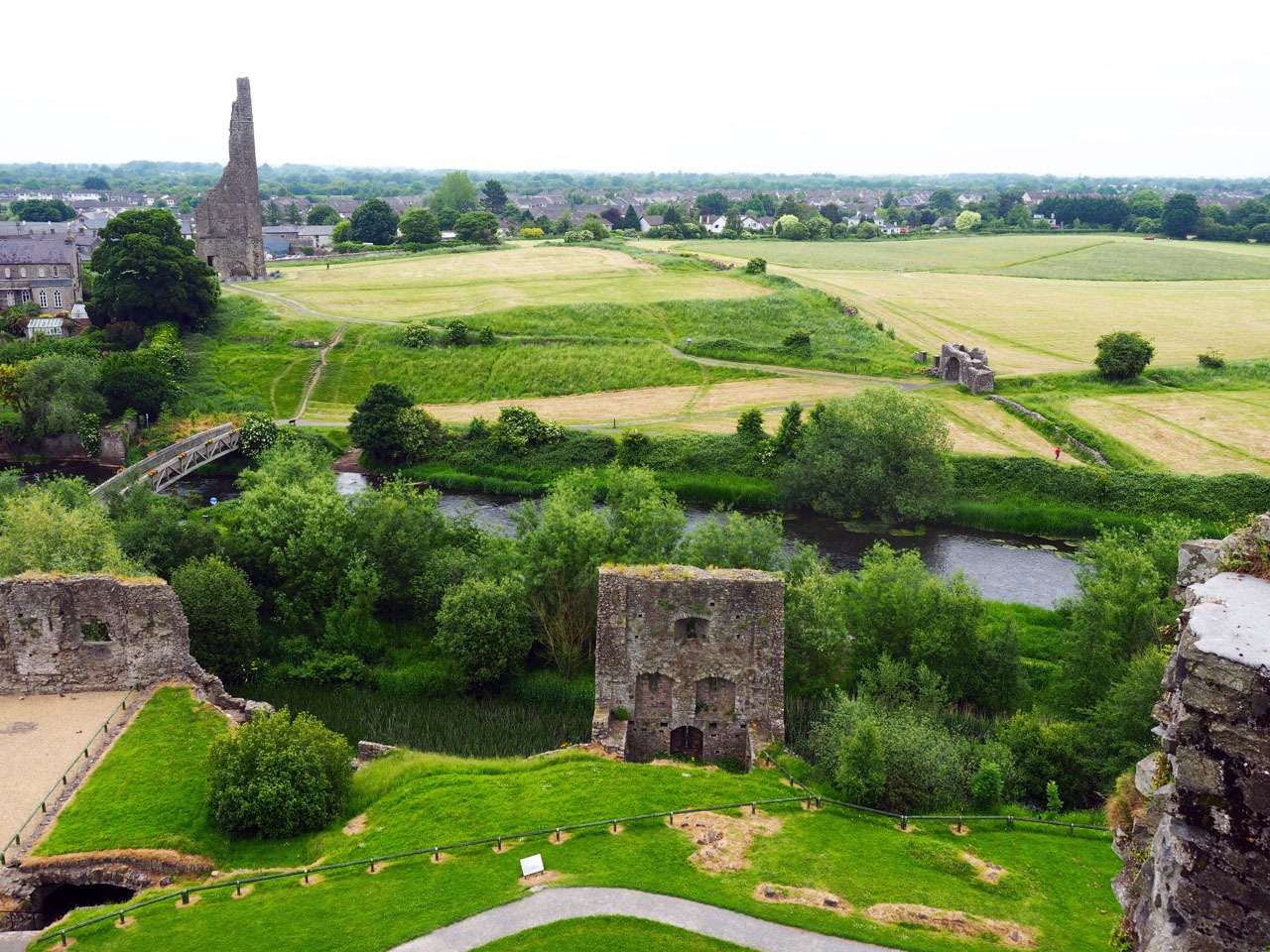
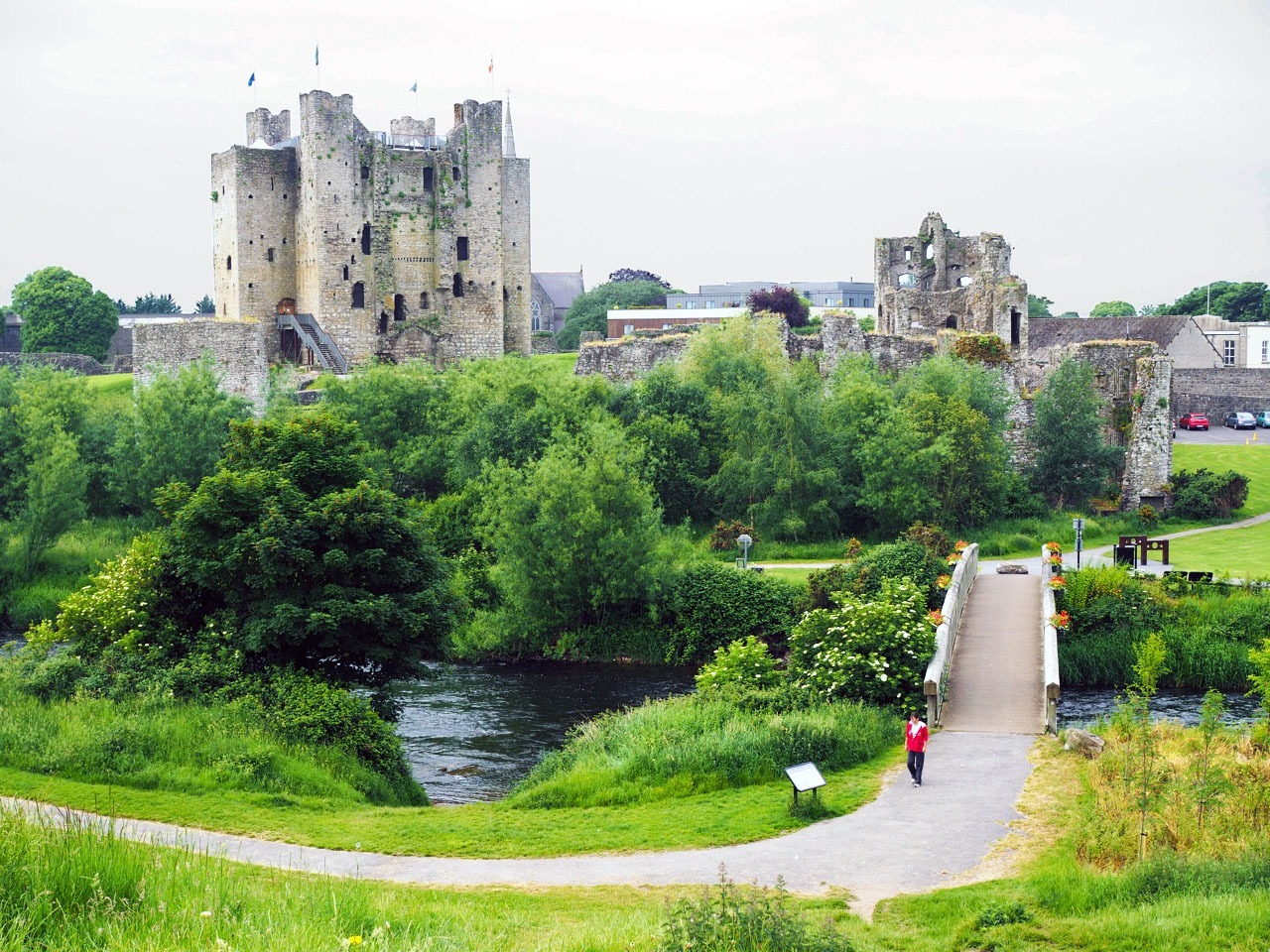
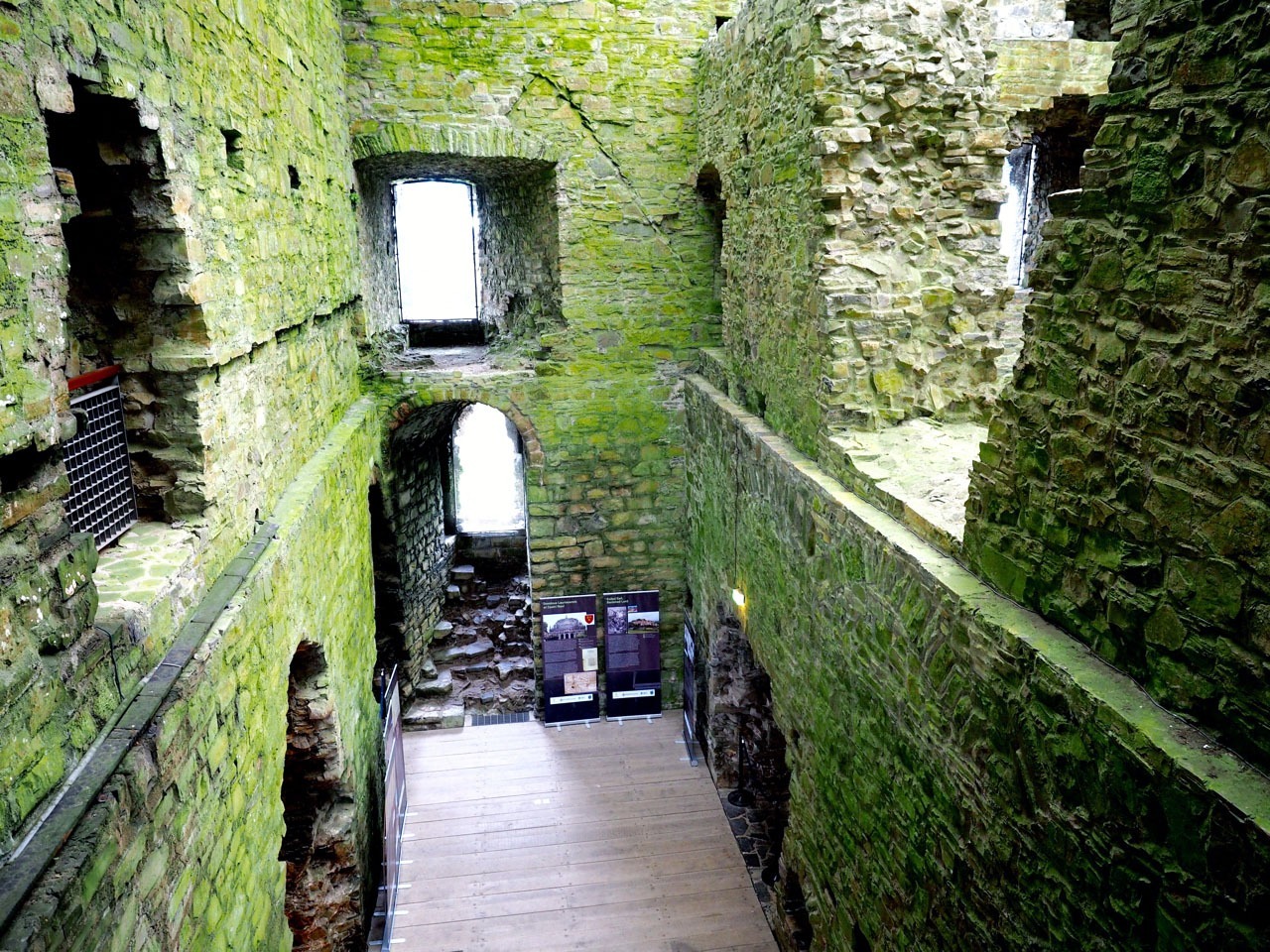 Welcome to the largest Anglo-Norman castle in Ireland! The castle was formerly used as a centre of Norman administration for the Lordship of Meath, hemmed by magnate Hugh de Lacy. The castle grounds cover over 30,000 square metres; but what really made it an acclaimed stronghold is the 20-sided, three-storied, two-metres thick central keep that can still be visited today. Three of the original four towers still flank its corners.
Welcome to the largest Anglo-Norman castle in Ireland! The castle was formerly used as a centre of Norman administration for the Lordship of Meath, hemmed by magnate Hugh de Lacy. The castle grounds cover over 30,000 square metres; but what really made it an acclaimed stronghold is the 20-sided, three-storied, two-metres thick central keep that can still be visited today. Three of the original four towers still flank its corners.
If the castle looks familiar, rest assured, you are not daydreaming: it was heavily featured in Mel Gibsons’ 1995 Braveheart.
This post was brought to you as a result of the #IrelandsAncientEast blog trip, created and managed by iambassador in partnership with Tourism Ireland. To Europe And Beyond maintains full editorial control of the content published on this site.


